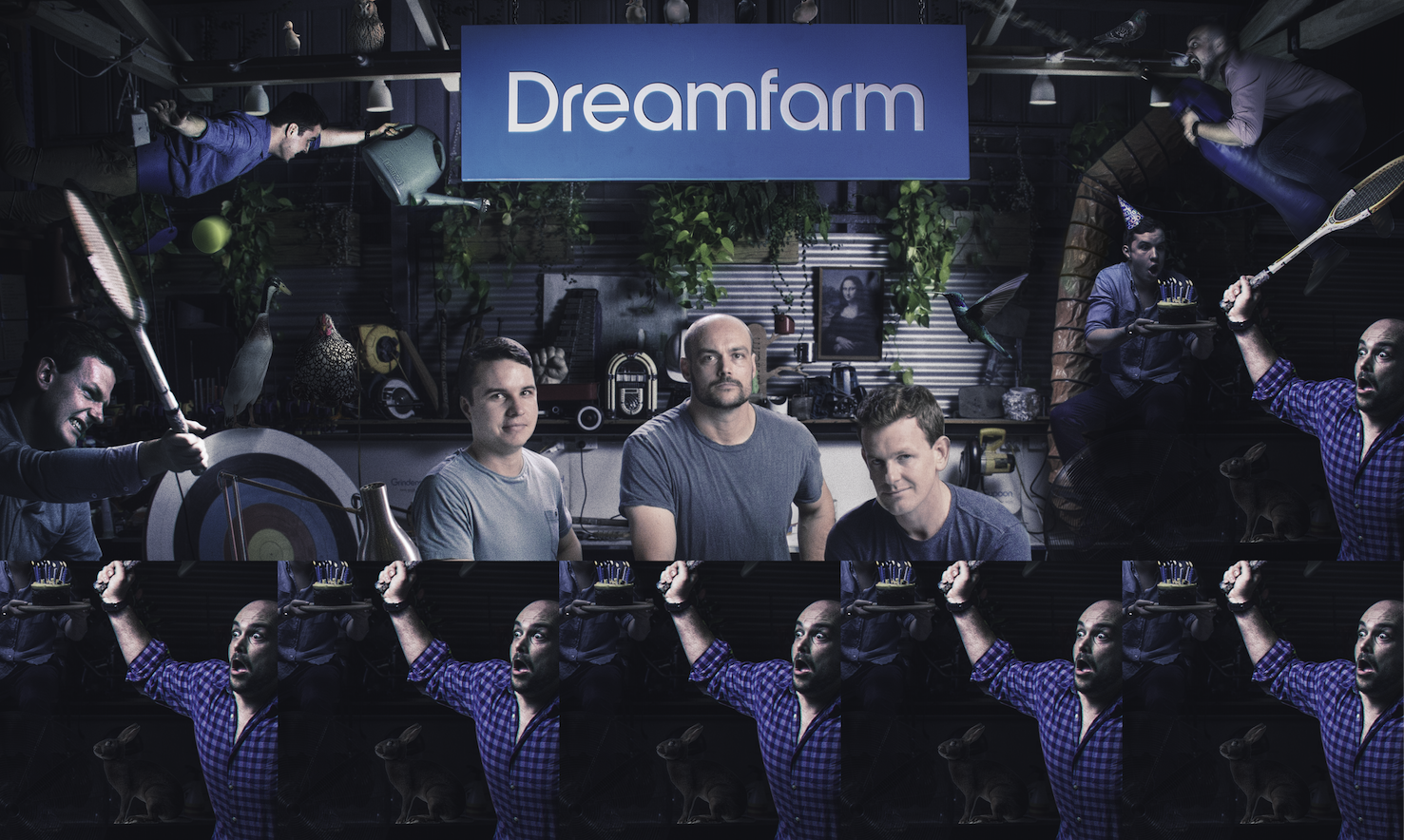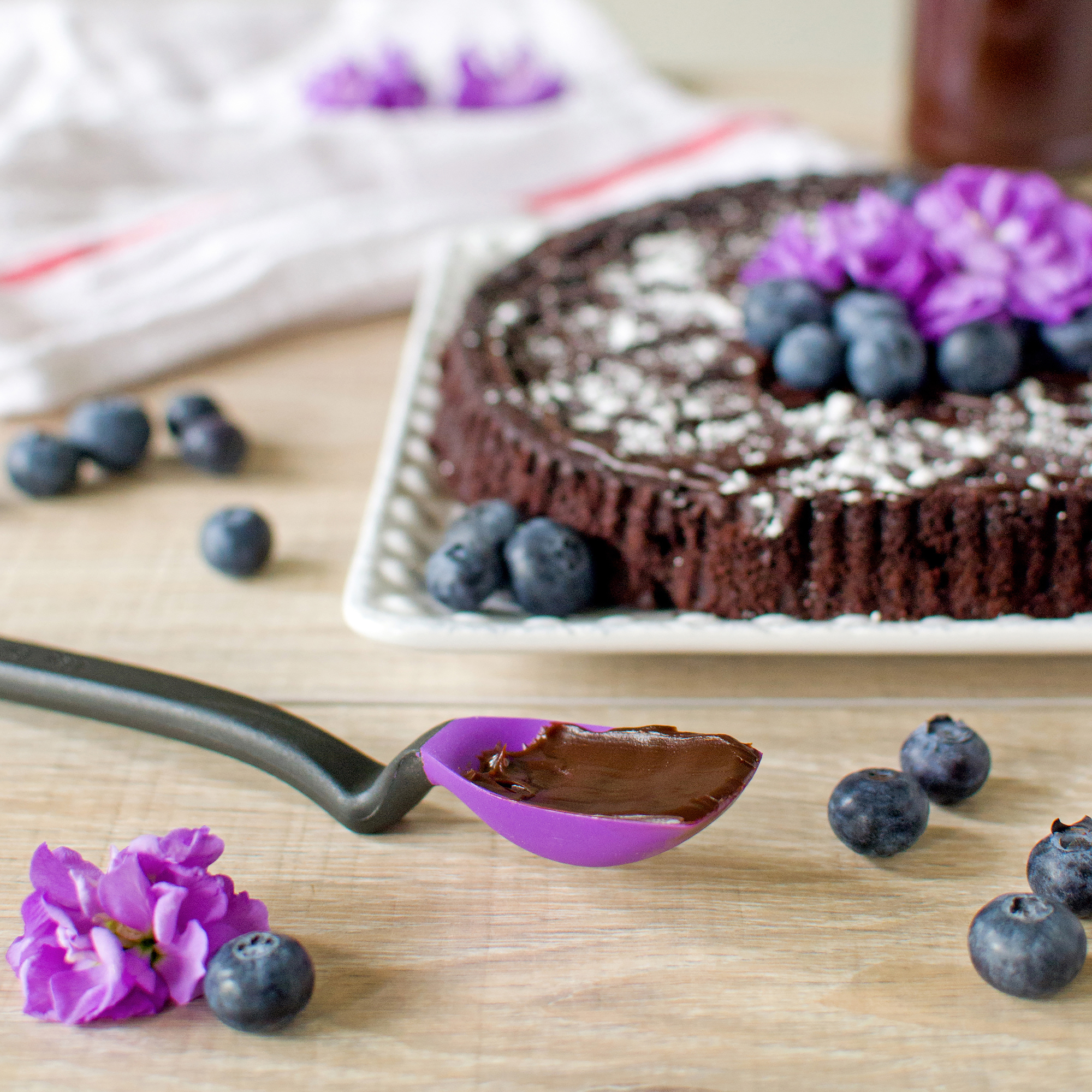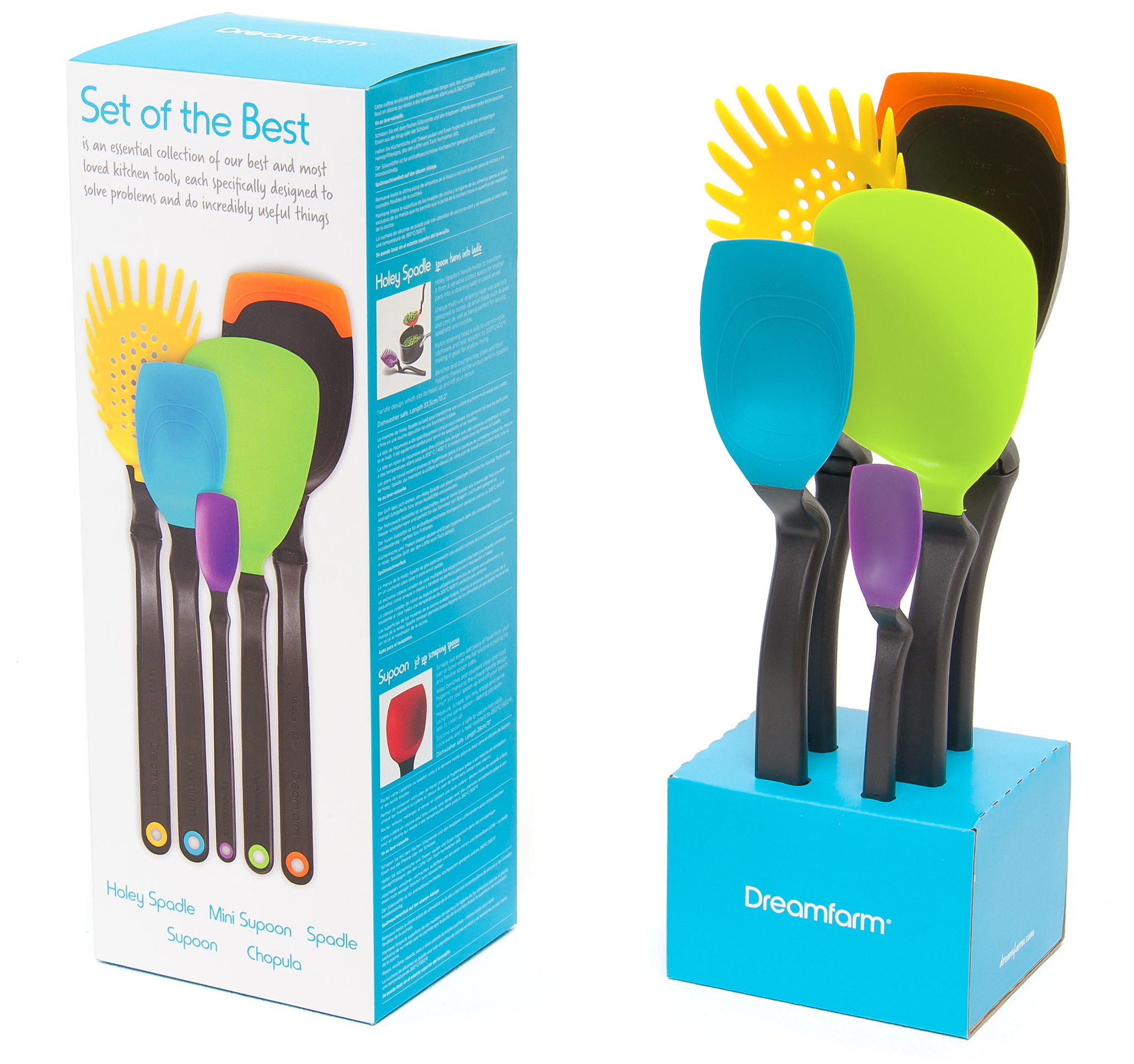by Vicki Matranga
Design Programs Coordinator, International Housewares Association
“Great design must solve problems” believes the crew at Dreamfarm, a problem-solving company that grows ideas for clever, useful kitchen and household products. “The hardest part of our job isn’t coming up with a solution,” says Alex Gransbury, Dreamfarm’s founder, “it’s finding a problem so that our products have a reason to exist. Products without a purpose are junk and the customer we design for is remarkably good at spotting junk.”
Established 15 years ago, Dreamfarm is a company powered by a group of high-spirited Australian designers, inventors and creatives who dream up original tools for daily living. The company now produces more than two dozen items sold around the world. The crew enjoys tinkering in the workshop as well as playing word puzzles, so the name of each multi-function product describes its uses. The Spadle spoon/ladle, Chopula chopping spatula, Clongs cliplock tongs, and the Levups, Levoons and Levoop line of scrape leveling measuring cups, spoons and scoop, reveal the team’s sense of humor and inventiveness.

IHA: What propelled the early success of your business?
AG: Many people. Starting a company is like raising a child – it takes a village. I started with just one product, the Grindenstein, and for years my mum helped me put them together every night of the week. As did my sister, Cate, who still makes magic happen for us daily for managing inventory and working in sales and marketing. My dad did our accounts for free for more than a decade, and Phil Howieson, our design manager, has been pushing the envelope with us for just as long. I honestly have a list as long as my arm of all the friends, family, teammates and factories that have bent over backwards from day one to make Dreamfarm a success.
Our first product is still one of our best and most consistent sellers—it just works better than anything else on the market. Would Dreamfarm have died if Grindenstein failed? Absolutely. Every time we launch a product it feels like a make-or-break pivotal event. And so it should be. Making stuff is hard. Making stuff that matters is even harder.

IHA: What makes Dreamfarm design unique?
AG: The standard we hold ourselves to. For us to create a product it must be new, it must solve a problem that’s worth solving and it must work the better than anything else on the planet. It’s the reason we do all our inventing and design work in-house. We don’t work with outside agencies because you can’t pay a design agency to create the world’s best garlic press, you can only pay for their time and ask them to try. We drive a concept hard, but when something’s not happening, we let it simmer and move onto something else. For every award-winning product that makes it into our customer’s hands, there are countless prototypes and half-baked ideas that just aren’t good enough yet.
IHA: Are there any specific designers, places or eras that influence you?
AG: “If I have seen further it is by standing on the shoulders of giants,” is how Sir Isaac Newton described the idea that we discover truth by building on previous discoveries. As inventors, it’s our job to connect new dots and create something new but we can’t do that in a vacuum. It’s important that we understand the problem we’re trying to solve as well as what has come before us. Our job is to build, not copy. And when we are fortunate to come up with a useful new idea, we need to stay humble by remembering that every new idea is built on, or is only possible because of, someone else’s idea that was once new too.

IHA: How do you choose which idea to develop and take to market?
The biggest challenge in creating something new and useful is getting people to understand what you’ve done because they’ve never seen it before. The reason that’s so important is because people can’t figure out if they care until they figure out what you’ve done. Yes, your product needs to be new, but equally, if not more important, is that it needs to be understandable. While Phil, Tom (product development engineer Tom Schuster) and I are our own harshest critics, there’s nothing more deflating than watching someone we know is smart fumble in trying to use one of our prototypes. It’s also very refreshing and keeps us honest.
On average we aim to launch between two and four products per year. That means in the next 10 years, of all the prototypes we make, only between 20 and 40 new products will see the light of day. That’s not a lot of chances to create something new and so useful that our children’s children and their children will use it. So, we make sure to make them count. We only launch our very best ideas, and we believe if we can keep holding ourselves to the standards that got us this far, the great customers we’ve found will keep introducing their friends to us.
What will Dreamfarm dream up next? View them in action at www.dreamfarm.com.
For more Inspiration magazine articles, continue reading on the IHA blog or download pdf’s of current and past issues on the IHA website.


